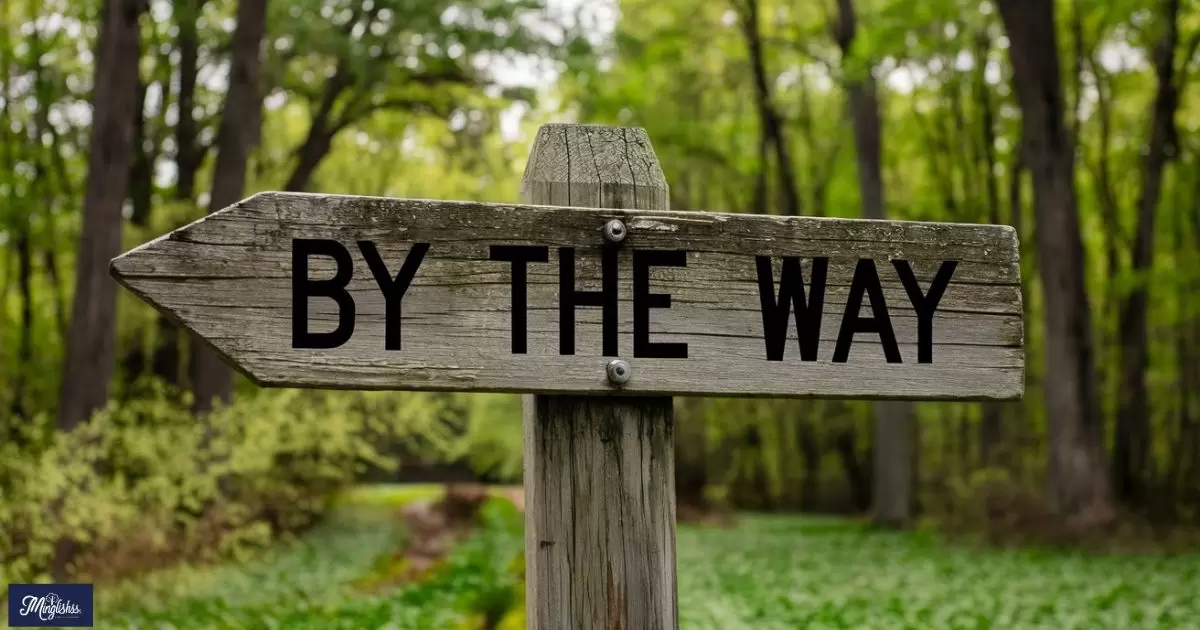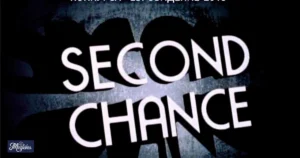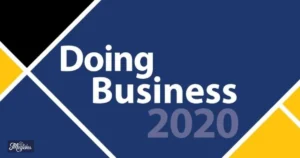“I would like to bring to your attention that…”
In professional communication, precision and clarity are essential. The phrase “by the way” is often used informally to introduce additional information or change topics, but in a professional setting, it’s crucial to convey these transitions with a more polished approach. Employing formal alternatives not only enhances the clarity of your communication but also maintains a professional tone.
Using the right phrase can also impact how your message is received and understood. Professional alternatives to “by the way” can make your communication more effective and respectful. This guide explores various formal ways to introduce additional information, providing you with tools to improve your professional correspondence.
25 Professional Alternatives to “By the Way”
1. “Additionally, I would like to mention…”
Scenario: When adding extra information in a business meeting.
Explanation: Introduces supplementary information clearly and professionally.
Additional Tip: Use this when you need to provide extra details that complement the main point.
2. “Furthermore, please note that…”
Scenario: In a report or formal email.
Explanation: Signals additional information that builds on the previous content.
Additional Tip: Ideal for formal documents or communications requiring detailed updates.
3. “I would like to highlight that…”
Scenario: When emphasizing an important detail in a presentation.
Explanation: Draws attention to a significant point that might be crucial for understanding.
Additional Tip: Effective for highlighting key points or important updates.
4. “Please be advised that…”
Scenario: When providing a formal notice or update.
Explanation: A formal way to introduce important information that needs to be acknowledged.
Additional Tip: Use this in formal communications where clear and direct notice is required.
5. “It is important to mention that…”
Scenario: When discussing a critical aspect of a project or issue.
Explanation: Emphasizes the importance of the upcoming information.
Additional Tip: Suitable for situations where the added information is crucial for understanding.
6. “In addition to what was previously mentioned…”
Scenario: During a discussion or meeting follow-up.
Explanation: Provides continuity and additional details related to prior points.
Additional Tip: Use to ensure that additional details are connected to earlier content.
7. “To further clarify…”
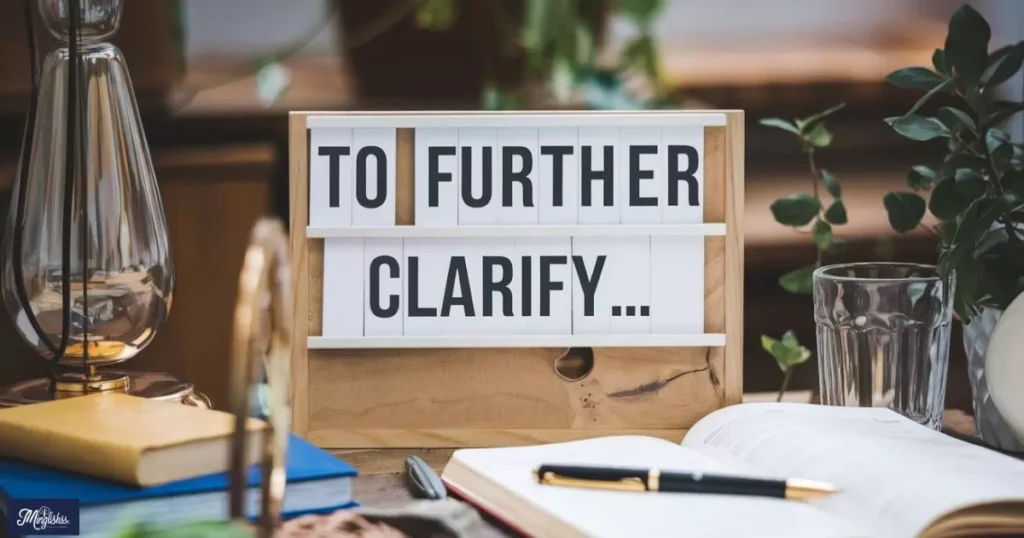
Scenario: When elaborating on a point made earlier in a conversation or document.
Explanation: Indicates that more detailed information will be provided for better understanding.
Additional Tip: Effective for elaborating on complex or important topics.
8. “I would like to add that…”
Scenario: In a collaborative discussion or team meeting.
Explanation: Introduces an additional point or detail that is relevant to the conversation.
Additional Tip: Use this to contribute further information that complements the discussion.
9. “As an additional note…”
Scenario: In a formal email or report.
Explanation: Adds extra information in a manner that is respectful and professional.
Additional Tip: Suitable for formal documents where additional points are relevant.
10. “For your reference, I would like to include…”
Scenario: When providing extra information in a report or presentation.
Explanation: Indicates that the following information is for additional context or reference.
Additional Tip: Useful for adding supplementary details that aid in understanding.
11. “I would like to draw your attention to…”
Scenario: When pointing out an important detail or update.
Explanation: Focuses the recipient’s attention on a specific point that needs consideration.
Additional Tip: Effective for emphasizing significant details or changes.
12. “As a side note…”
Scenario: When adding less critical but relevant information.
Explanation: Provides additional information that is related but not central to the main topic.
Additional Tip: Use when the information is important but secondary to the main points.
13. “Please consider the following additional information…”
Scenario: When providing extra details for consideration.
Explanation: Introduces supplementary information that should be taken into account.
Additional Tip: Ideal for formal contexts where additional information is necessary.
Professional Ways to Express Gratitude: “Thank You for Your Understanding”
14. “To supplement our previous discussion…”
Scenario: When following up on a discussion with more details.
Explanation: Adds extra information that enhances or completes the earlier conversation.
Additional Tip: Use to provide further insights or updates on a discussed topic.
15. “As an update, I wanted to mention…”
Scenario: When sharing new information or changes.
Explanation: Provides a timely update with relevant additional details.
Additional Tip: Useful for conveying new developments or changes in a professional manner.
16. “I would like to inform you that…”
Scenario: When formally announcing additional information.
Explanation: Clearly and formally introduces new or supplementary details.
Additional Tip: Effective for formal communications requiring clear announcements.
17. “For the sake of completeness, I would like to add…”
Scenario: When ensuring that all relevant information is covered.
Explanation: Adds information to ensure thoroughness and completeness.
Additional Tip: Ideal for providing comprehensive details in formal documents.
18. “To elaborate further on this topic…”
Scenario: When expanding on a subject discussed earlier.
Explanation: Indicates that more detailed information will be provided.
Additional Tip: Use to add depth to a previously discussed topic.
19. “In relation to our earlier discussion…”
Scenario: When adding related information to a previous conversation.
Explanation: Connects additional information to the earlier discussion.
Additional Tip: Useful for maintaining continuity and context in discussions.
20. “As an aside, it is worth noting…”
Scenario: When mentioning additional but relevant information.
Explanation: Introduces additional information that is related but not the main focus.
Additional Tip: Suitable for adding supplementary details without deviating from the main topic.
21. “To provide further context…”
Scenario: When offering more background information.
Explanation: Adds additional context to enhance understanding of the topic.
Additional Tip: Effective for clarifying or expanding on complex subjects.
22. “I would like to bring to your attention…”
Scenario: When emphasizing an important detail or update.
Explanation: Directly highlights a significant point that needs attention.
Additional Tip: Use when the information is crucial and should be specifically noted.
23. “Please be aware that…”
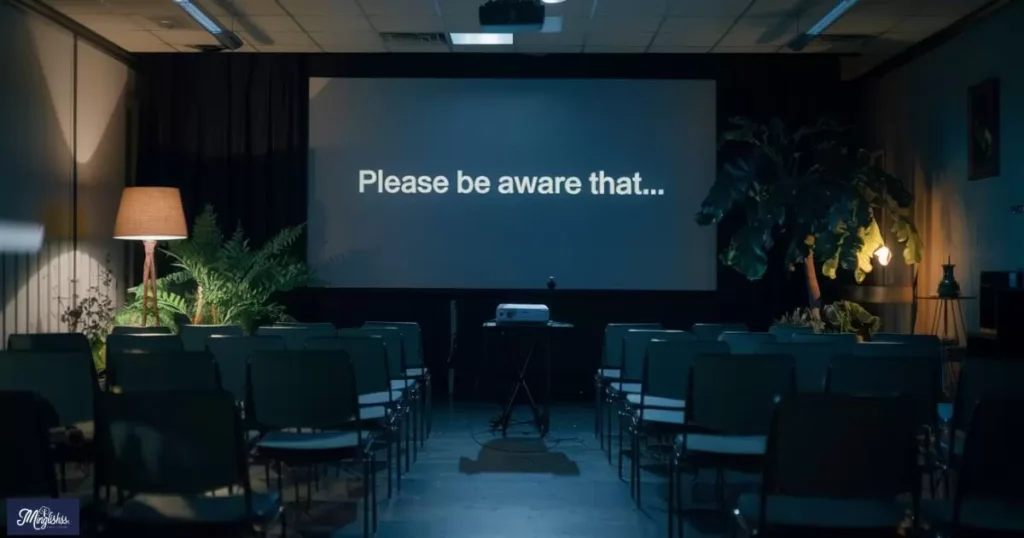
Scenario: When making the recipient aware of additional information.
Explanation: Conveys important information that the recipient needs to be aware of.
Additional Tip: Ideal for formal notices or updates requiring attention.
24. “I wanted to highlight that…”
Scenario: When pointing out a key piece of information.
Explanation: Focuses on a specific detail that is important to the discussion.
Additional Tip: Effective for emphasizing significant details in formal communication.
25. “I would like to take this opportunity to mention…”
Scenario: When adding a point during a conversation or presentation.
Explanation: Seizes the moment to introduce additional information.
Additional Tip: Useful for incorporating relevant information in the context of the discussion.
Pros and Cons Table
| Pros | Cons |
| Professional tone: Formal alternatives maintain a respectful and polished tone. | Potentially verbose: Some alternatives may come across as wordy or overly formal. |
| Clarity: Provides clear and precise communication of additional information. | Context-specific: Some phrases may be too formal for casual interactions. |
| Improves perception: Enhances the professionalism of your communication. | May seem impersonal: Formal language can sometimes lack warmth or personal touch. |
| Maintains focus: Keeps the conversation or document organized and on track. | Requires careful selection: Must choose the right phrase to fit the context. |
| Shows consideration: Demonstrates that you value clear and effective communication. | Risk of misinterpretation: Overly formal expressions might be misunderstood or misread. |
Conclusion
Using professional alternatives to “by the way” can greatly enhance your communication by providing clarity and maintaining a respectful tone. By selecting the right phrase, you convey additional information effectively while demonstrating professionalism. These alternatives help to keep your communication clear, organized, and suitable for a range of formal contexts.
Answer to key Question
Q1: Why should I avoid using “by the way” in professional communication? A1: “By the way” can be too informal and may not convey the appropriate level of professionalism or clarity needed in formal settings.
Q2: How do I choose the right alternative to “by the way”? A2: Consider the context of your communication and the formality of the setting to choose an appropriate alternative.
Q3: Can using formal phrases make my communication seem less genuine? A3: If chosen carefully and aligned with the context, formal phrases can maintain professionalism while still conveying genuine information.
Q4: What if the recipient prefers a more informal tone? A4: Adjust your language to match the recipient’s preference while still maintaining professionalism and clarity.
Q5: How can I ensure my formal communication remains approachable? A5: Select phrases that are clear and respectful, but also consider the recipient’s style and the context to keep the communication approachable.

Hi, I’m Lauren Reynolds: I bring creativity to English lessons, mixing fun with learning. My goal is to inspire students to explore and enjoy the language.
